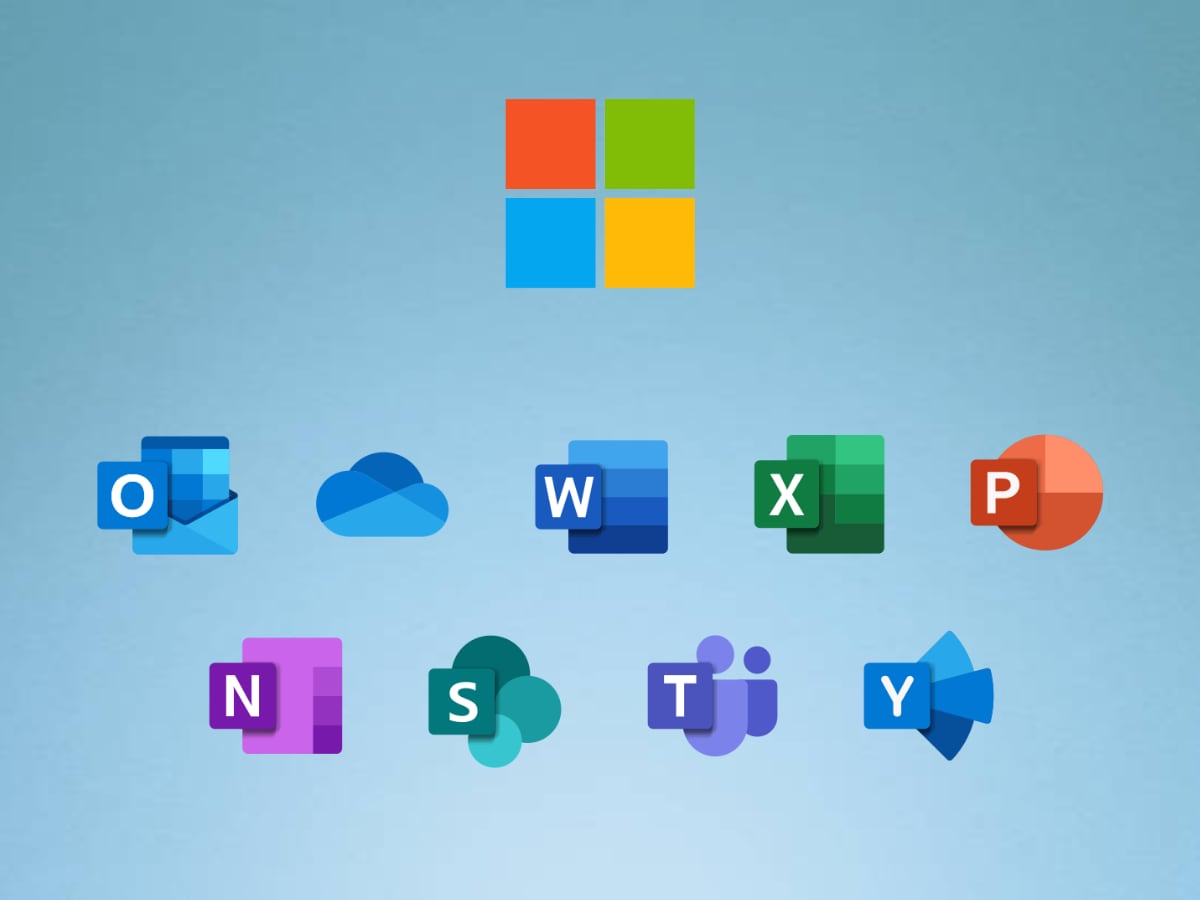While analysts were calling for 2023 to be a bad year for equity markets, it has been anything but bearish and in fact has been on an absolute tear thanks to the excitement behind artificial intelligence (AI). One such AI stock that's been responsible for bringing back the tech bull market is Microsoft and its now globally recognised generative AI chatbot ChatGPT. With Microsoft reporting its upcoming financial earnings, everyone from investors to technology enthusiasts is eager to gain an insight into the company's financial performance and the potential impact on both its stock price and the market sentiment more broadly. In this article, we will provide a comprehensive preview of Microsoft's earnings. This will include the basics of Microsoft's business model and a forecast of Microsoft's earnings for and future business growth.
Who Is Microsoft?
Microsoft Corporation is a multinational technology company based in Redmond, Washington and was founded by Bill Gates and Paul Allen in 1975. Thanks to its strong and varied product offerings of Windows, Office, Azure and the Xbox, Microsoft has established itself as a dominant player in various sectors of the technology industry. These include software development, cloud computing, hardware manufacturing and most recently, artificial intelligence.
When Is Microsoft Reporting Earnings?
Microsoft will be wrapping up its fiscal year 2023 and releasing its Q4 financial results on 25th July 2023, after the US market closes. According to Wall Street analysts, earnings per share are estimated to come in at US$2.55 for MSFT. Revenue-wise, Microsoft is expected to bring in a forecasted US$55.4B.
Microsoft's Previous Earnings Quarter
In Microsoft's previous quarter, Microsoft reported revenue of US$52.9B and earnings per share of US$2.45. This was a huge surprise for Microsoft because of previously highlighted headwinds, which included
dwindling Windows operating software sales. Additionally, Microsoft's gaming sector underperformed because the company sold fewer Xbox Series S and X than expected. Despite these stumbling blocks, Microsoft managed to turn things around in the productivity and cloud computing divisions of its business. From double-digit growth in new subscribers to a 27% increase in Azure revenue, Microsoft exceeded expectations thanks to strong performance from Teams, Office, LinkedIn and Azure.
Understanding MSFT Stock's Valuation: Revenue Breakdown by Business Segments
Overall, Microsoft's success can be attributed to several key drivers that have fuelled its growth in recent years. From its cloud computing platform, Azure, to its productivity software suite, Microsoft 365, the company has strategically positioned itself in lucrative markets by leveraging emerging technologies. These include the shift to remote working environments and the exploration of AI technology for greater workplace productivity. To gain a comprehensive understanding of Microsoft's financial performance, it is essential to analyse its revenue breakdown by business segments. This analysis provides insights into the revenue contribution of each segment and helps identify areas of strength and potential growth.
Cloud Computing & Azure
The need for a resilient and modern work infrastructure was exemplified during the pandemic. Thankfully, Microsoft's Azure had the right foundations and technological innovations to steadily establish itself as a leader in the cloud computing platform space. From cloud-hosted virtual machines and website hosting to machine learning services and serverless computing, Azure has been a mega-hit among enterprises looking to scale up their operations and take advantage of Azure's global data centres. One of the most appealing aspects of Azure has been its pay-per-use business model. Rather than paying a fixed fee, Azure only charges businesses based on the computing time used. This ultimately makes Azure an affordable and comprehensive cloud computing platform given its variety of products on the sides of Infrastructure, Platform and Software as a Service. It's no wonder Azure is known as the crown jewel of Microsoft and is the largest contributor to Microsoft's total revenue.
Productivity & Business Processes
Microsoft's productivity and business processes segment encompasses software products like Office, SharePoint and Teams. Office's range of products, from Office 365 to the latest version of Microsoft Word, is widely used by people and businesses around the world for document creation and collaboration. Thanks to the interconnectivity of the Office ecosystem and the introduction of SharePoint, users can effortlessly streamline processes, organize projects and collaborate on documents in real-time with the click of a button. Additionally, Teams has also exploded in popularity due to the surge in remote working and has become a go-to collaboration platform for many businesses that utilise its messaging and video call functions. Businesses tend to rely on these applications because of the overall stickiness and security of the entire productivity ecosystem. This could thus contribute to Microsoft's revenue in the form of licences and further supplement the second largest revenue division for Microsoft.
Windows
Windows, which is Microsoft's flagship operating system, continues to play a significant role in the company's earnings. Despite the transition away from traditional desktops and laptops towards alternatives like Apple's MacBook, Windows still provides Microsoft with a steady stream of revenue thanks to its large enterprise customer base. This is because most enterprises rely on Windows for their basic operations such as document processing and database management. In the current fiscal year, Microsoft launched its series of Windows-related products, making them a focus. On top of improving user experiences, these products also provide new avenues for revenue growth. This includes the introduction of Microsoft Defender and Windows Hello biometric authentications that solve cybersecurity business needs.
Gaming
Microsoft's gaming division offers consumers a range of products, including Xbox consoles, games, accessories and Xbox Live subscriptions. This combined with gaming on Windows computers helped Microsoft achieve a huge share of the gaming market in the past few decades. First-party intellectual properties like Halo, Gears of War and Forza Motorsport helped are some of the main drivers of Xbox hardware sales. Unfortunately, while Microsoft has dialled things back the past few years when it came to offering more exclusive titles, it has taken steps in the right direction to win back its gaming audience. From making its Xbox Game Pass subscription service extremely affordable to acquiring more gaming studios like Bethesda and Mojang, it's clear Microsoft is serious about reclaiming its gaming-first positioning in the PC and console space. While Microsoft's gaming division revenue levels aren't at the highs we saw during the pandemic, they are certainly nothing to scoff at given that they remain Microsoft's fourth largest revenue contributorthan expected because of declining Xbox hardware revenue levels, the silver lining is that Xbox services revenue grew due to the popularity of Microsoft's Xbox Game Pass subscription service.
How Microsoft Benefits from the Meteoric Rise of OpenAI’s ChatGPT
Since opening its use to the public, OpenAI's ChatGPT has been steadily rising in popularity. In short, this natural language processing (NLP) tool is based on the Generative Pre-training Transformer (GPT) model and allows users to create conversational AI agents that can mimic human conversation with astounding accuracy. Microsoft's Azure platform serves as the backbone for ChatGPT's hosting, allowing developers to easily deploy models onto its cloud infrastructure. Furthermore, Azure also offers a range of other services such as AI Toolkit for developers to easily build and deploy their own models. With the surge in usage of ChatGPT, Microsoft can look forward to more customers using Azure for hosting NLP-based applications. This combined with Microsoft and OpenAI's market leader status in the generative AI-related services may directly result in an increase in revenue for Microsoft's cloud division.
Tailwinds & Headwinds for Microsoft
Bull Case for MSFT Stock
As mentioned in the section above, generative AI looks to be a huge area of growth and revenue generator for Microsoft and MSFT stock in the near future. Since investing US$10B into OpenAI and extending its partnership, Microsoft has made integrating AI into its existing tech solutions and ecosystem a top priority. From making Bing the default search engine for ChatGPT to integrating ChatGPT with Microsoft's productivity tools like Word and Excel, we're seeing Microsoft essentially go all-in on making generative AI as accessible to the public as possible. So far, their strategy has proved effective; ChatGPT has become a household name and we're seeing the public adopt all the productivity benefits that come with generative AI. With these upcoming quarterly earnings reports, bullish investors could be looking out for further progress regarding the integration of AI with Microsoft's ecosystem and continued innovation in the AI space.
On top of AI being the main driver of excitement for MSFT stock, Azure is also gaining traction and catching up to its main competitor, Amazon Web Services (AWS). In a recent report about cloud service providers by Synergy Research Group, Azure is seen to have 23% of the worldwide market share in the cloud market while AWS possesses 32%. This gap between both cloud market leaders may likely narrow as Azure's adoption is seen to be rising when compared to AWS. Given that cloud computing is a high margin business, Microsoft may likely rake in a staggering amount of revenue over time should Azure continue to gain popularity among businesses and enterprises.
Bear Case for MSFT Stock
As with any SaaS business model, uptime and server integrity are essential as businesses depend on these cloud services to stay operational. Unfortunately, Digital-Denial-of-Services (DDoS) attacks and server outage disruptions have been a thorn in Microsoft's side for the longest time. These outages and data breaches can be severely damaging to Microsoft's reputation as it's a brand that is known for its reliability and trustworthiness. Ultimately, such disruptions may have long-term consequences that push customers towards cloud competitors like Amazon and Google.
An additional headwind that's plaguing MSFT's valuation is the impact of regulators on the Microsoft-Activision Blizzard merger deal. It's been months since the US$68.7B acquisition was originally announced (January 2022), and the deal is still yet to be finalised between both parties. While attempts to broaden its declining market share in the gaming space are to be applauded, Microsoft's merger acquisition has run into roadblocks on multiple occasions. This includes opposition from regulatory authorities because of anti-competition and monopoly fears. Even though Microsoft has managed to overcome objections from the Federal Trade Commission, the merger still has some steep hurdles to overcome including a review by the U.K. Competition and Markets Authority extended the deadline in late August.
Microsoft Financial Ratios
Now that you're aware of the potential catalysts and roadblocks that Microsoft might face, let's delve deeper and consider the financial ratios of Microsoft to gauge its overall health and fundamentals as a tech giant. All data is obtained from Microsoft's quarterly earnings reports.
Price-to-Earnings Ratio
For beginner and experienced investors, PE ratios are one of the easiest ways to value a stock and gauge if the stock is fairly priced. Microsoft's trailing twelve-month PE ratio currently stands at 37.48, slightly higher than the industry average S&P 500 PE ratio of 26.37. This possibly indicates that investors are expecting more growth from Microsoft relative to its peers or that the MSFT stock is overvalued compared to its benchmark index.
Free Cash Flow
Despite heavily investing in growth and emerging market trends, you'll be surprised to know that Microsoft has a healthy free cash flow (FCF) balance. At a 5-year average of more than US$50B, Microsoft is fundamentally healthy as a business and is able to spend the amount necessary to guarantee that revenue growth numbers remain high in the long term.
MSFT Stock Technical Analysis

Source: TradingView as of 19 July 2023
Since breaking through its previous all-time high, MSFT shares seem to have really picked up momentum as volume has been piling in during the past few weeks. Accompanying the increase in trading volume is MSFT stock's recent upward surge that's likely caused by the AI-related rally. Overall, this can be seen as a strong sign of bullish momentum for MSFT stock as investors buy into the excitement that AI presents and are expecting Microsoft to deliver positive earnings results for this past quarter. The near-term directional bias is to the downside as MSFT stock may move to retest the bottom of the ascending channel.
Bullish MSFT stock traders may be looking for the positive momentum from Microsoft's robust earnings report to bounce off the US$350 resistance and possibly head towards greater highs.
Conversely, bearish MSFT share traders may be looking out for a weak earnings report from Microsoft, or a lack of news related to AI, which could provide downward momentum and cause MSFT shares to retest the US$327 to US$344 demand zone.
The Bottom Line for Our MSFT Stock Forecast
As a leader in the tech industry, Microsoft's growth as a SaaS and AI stock has been above average. The fact that MSFT shares have established new all-time highs proves that Microsoft is a popular business that's here to stay for the long haul. Volatility-wise, Microsoft is expected to be one of the biggest movers when it comes to this quarter's earnings report as all eyes are on the future prospects of AI and cloud computing. Now that we've explained their revenue drivers, highlighted their bull and bear cases, and offered both fundamental and technical analysis, we hope you're now armed with the knowledge to make the most informed decision when trading ahead of Microsoft's quarterly earnings.
Keen on getting involved? Get started with your investing and trading journey with us today.
Disclaimer: CMC Markets Singapore may provide or make available research analysis or reports prepared or issued by entities within the CMC Markets group of companies, located and regulated under the laws in a foreign jurisdictions, in accordance with regulation 32C of the Financial Advisers Regulations. Where such information is issued or promulgated to a person who is not an accredited investor, expert investor or institutional investor, CMC Markets Singapore accepts legal responsibility for the contents of the analysis or report, to the extent required by law. Recipients of such information who are resident in Singapore may contact CMC Markets Singapore on 1800 559 6000 for any matters arising from or in connection with the information.






